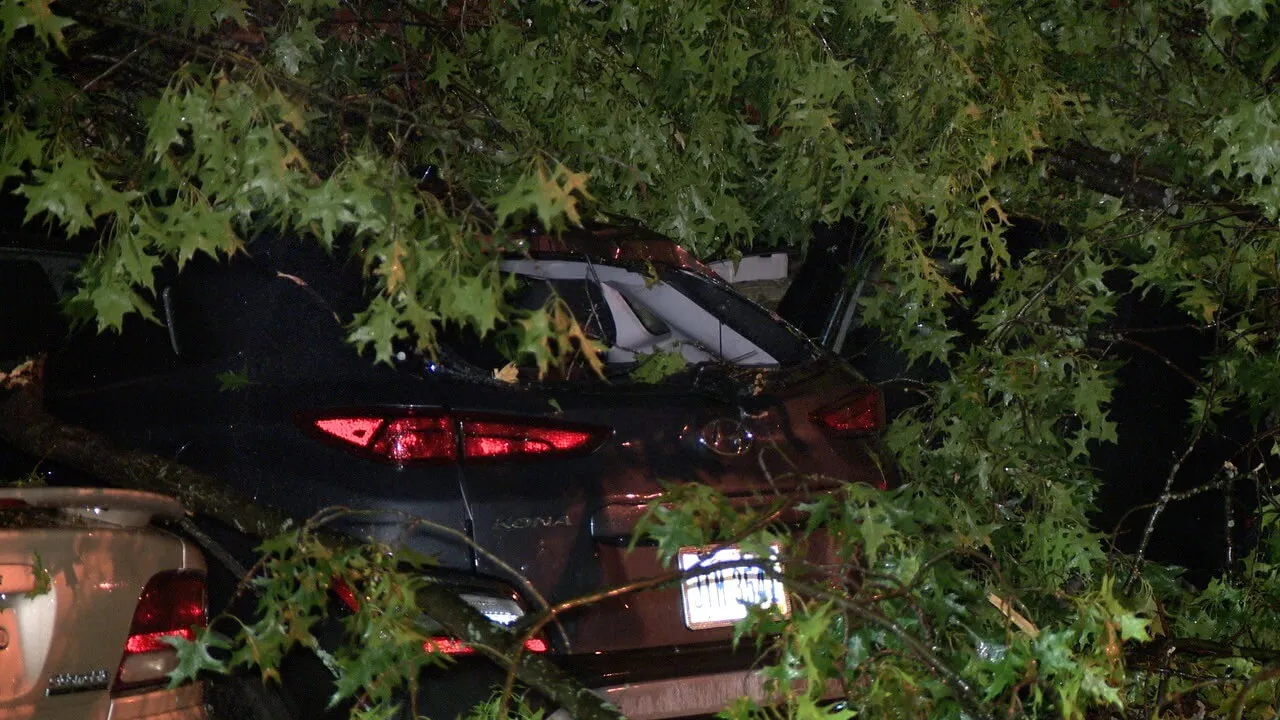PARMA HEIGHTS, Ohio — On Wednesday night, a powerful storm swept through the suburbs of Cleveland, leaving behind fallen trees, damaged vehicles, and power outages affecting thousands of households. In Parma Heights, where the storm's aftermath was especially pronounced, residents woke up to the roar of falling branches and emergency sirens. Oakwood Road, a quiet residential street near Pearl Road, turned into a chaotic scene: massive trees, uprooted from the ground, blocked the roadway, and debris was scattered across yards.
According to local reporters working on the scene as part of the Good Morning Cleveland program, one of the fallen trees, at least 60 feet tall, fell onto a parked car, crushing its roof. Fortunately, there were no casualties, but the extent of the damage prompted the community to reflect on suburban vulnerability to increasingly frequent climate disasters. “It was like an explosion,” says local resident Marta Kowalski, whose yard is now cluttered with branches. “The wind was howling as if it wanted to wipe everything in its path.”
Meteorologists report that wind gusts reached 70 miles per hour, which was unexpected even for a region accustomed to harsh weather conditions. Utility officials estimate that power restoration in the hardest-hit areas could take until the end of the week. Local officials, who have already faced criticism for slow response to previous storms, promised to accelerate debris cleanup and infrastructure recovery. “We are mobilizing all resources to restore normal life as quickly as possible,” said Parma Heights Mayor Michael Birn at a morning press conference.
This storm is part of a broader pattern of extreme weather events increasingly impacting the Midwest. Climate experts interviewed by The New York Times note that the combination of strong winds, heavy rainfall, and unstable temperature regimes indicates a worrying trend caused by climate change. “This is not just weather,” says Dr. Allison Gray, a climate scientist at Ohio State University. “This is a new reality that communities need to adapt to.”
Meanwhile, residents of Parma Heights are picking up debris and assessing damages, many wondering how best to prepare for future storms. Local activists are already calling for investments in more resilient infrastructure, including upgrades to electrical grids and greening programs that involve planting trees more resistant to high winds. “We can't just react,” says community organizer Jacob Wright. “We need to be proactive.”
For Parma Heights and similar communities across the country, this storm is yet another reminder that nature does not wait for humanity to be ready.



